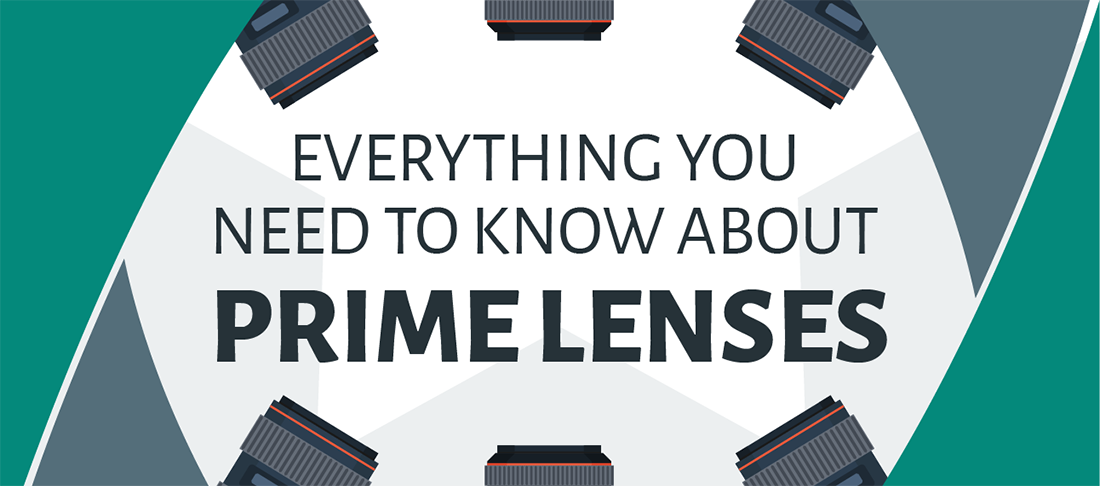Everything you need to know about Prime Lenses

While there are many types of lens in the world of photography, the ‘prime’ or fixed focal length is arguably the first addition to your kit you’ll make as a beginner – and if you’re experienced you’ll almost always have a good prime with you.
Here, we’re going to discuss the ins and outs of prime lenses, including What is a prime, what makes them good, which focal length is right for you and also when and how to use them.
We’ve covered lenses before in a detailed guide – where we touched on prime lenses. Now, however, we’re going into detail on this must-have piece of kit.
What is a prime lens?
Essentially a prime lens is one that doesn’t zoom – offering a fixed focal distance. Prime lenses must, therefore, be ‘zoomed in’ by moving closer to your subject. They are lighter and smaller than zoom lenses and also tend to have larger maximum apertures to allow a greater amount of light in. Prime lenses come in a variety of focal lengths – commonly 35mm, 50mm and 85mm. Each focal length will give you different results when you take a picture from the same spot.

However, the actual ‘zoom’ you get from these lengths will differ depending on whether you’re using a full-frame or cropped body camera. For instance, a 50mm lens will give you a more ‘zoomed out’ picture on a full-frame.
What are the benefits?
A prime lens is usually ‘faster’ than its competition, as the larger maximum aperture, which is usually between f/1.4 or f/1.8, enables a higher shutter speed. This means they’re great for shooting fast-moving objects and catching crisp, ‘sharp’ imagery.
Due to this higher aperture, many prime lenses let in more light and are therefore better for shooting in low light conditions. This also means they create better ‘bokeh’ or background blur – especially useful for portraits.
Prime lenses are smaller and lighter than their zoom counterparts, meaning you can reduce the overall size of your camera and keep it light and portable whilst shooting. They’re also generally cheaper than zoom counterparts – which is always a bonus when you’re involved in the often expensive hobby of photography.

The lack of zoom ring means you’ll be forced to experiment with angles and distance yourself, ultimately making you a better photographer.
Which focal length is right for me?
Because prime lenses have fixed focal lengths, you’ll need to decide on what you’re mainly going to shoot in order to pick a focal length that works for you. Here’s a guide to the most common lengths and what you’d use them for:
Standard lenses
These lenses are close approximations to the image you see with the human eye, meaning you can compose using your own vision as judgement. Some stand out models include:
35mm: This lens on a crop sensor (APS-C) is the closest way to approximate the same image you see with your eye. That means the image you take should be at the focal length your eye sees it at. 35mm lenses tend to be sharp, fast and have high maximum apertures to let in the most amount of light.
This makes this length great for videography too, as you’ll get to compose using your eye.
50mm: On a full-frame sensor, this lens is similar to a 35mm. Often referred to as a ‘nifty fifty’, these lenses are usually affordable, light and provide great image quality.
Telephoto lenses
Telephoto lenses give you a greater ‘zoom’ – without the zoom ring function of larger lenses such as 70-300mm. They tend to come in options such as 85mm, 100mm and 135mm, which will give different perspectives. Longer focal lengths mean you’ll need a larger aperture to give the image enough light. Because of the size of telephoto prime lenses, you’ll need image stabilisation once you exceed 200mm to prevent shake issues.
Wide-angle lenses
Wide-angle prime lenses are usually found at a focal length of less than 40mm. These give the camera a greater field of view, allowing you to capture landscapes and architecture with the same sharpness as other prime lenses. It’s for that reason why wide-angle lenses at 28mm, which slightly expands the field of view, are much loved. Their shorter focal lengths typically mean they have a deep depth of field in order to capture every element of a scene in focus, which is much prized by landscape photographers.
Specialist lenses
Some prime lenses are for specialist applications, such as macro prime lenses that produce a 1:1 magnification ratio. These lenses also typically achieve a flatter image plane and minimise barrel/pincushion distortion that occurs in standard lenses. They’re sharper than standard lenses at macro distances but become far softer when not used for their proper application. For this reason, only buy a macro lens if you’re going to shoot macro.
There are other specialist lenses that are for very specific purposes, such as tilt-shift lenses that let you control the perspective and plane of focus. These lenses are usually reserved for architecture.
Zooming ‘with your feet’
The most common advice you’ll receive if you purchase a prime is that zooming becomes something you do with your feet. This forces you to consider image composition and framing, as the focal length of your lens is what you’re stuck with. You’ll need to bend down to shoot low-level imagery or move further out to get a wider angle.
Ultimately, getting your hands on a prime lens is an (often) affordable way to sharpen your images and practice shooting without the reliance on standard zooms. By using a prime such as a 50mm, you’ll have a faster, sharper camera that is lighter and more compact – encouraging you to take it out and get practising.
- By Matthew Ward
- 3 Feb 2017





























































